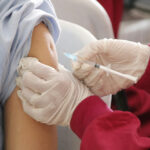
Image: geralt.
By Ronaldo Araujo
The Internet and web domain as a means of communication of scientific activity based on open science have provided the emergence of new forms of production, circulation, and evaluation of research results.
Nowadays, people not only search the web, they also interact there! Researchers rely on more responsive filters when it comes to choosing the research sources and on channels in which they can promote their research, increasing the visibility of their work, attracting new audiences, and having their studies read by more people and, consequently, receiving more citations! This environment involves not only publishing or being available on the web, but also implies in the use of social web tools in order to be visible and increase impact.
The success in adhering to social web technologies and the constant use of social media has opened up new opportunities for collaboration and information sharing in scientific activity; with that comes the emergence of new indicators to evaluate the online attention received by the research and the visibility of its results, especially those published in journal articles.
While the common practice of scientists and researchers is to routinely assess the impact factor of journals in their area to determine where to submit their manuscripts, now they can also consider the social impact of the journal in the relationship that the journal establishes with the scientific community and the public.
Among the new indicators that emerge in this scenario, besides altmetrics, which presents itself as an emerging field of the metric studies of scientific information in the social web, there is also social media metrics that besides evaluating impact – meaning the social media impact factor of a journal – can help editors and editorial teams manage their journals’ profiles on social media sites such as Twitter and Facebook.
Such social media metrics for journals can be enhanced in the application of digital scientific marketing as long as it is accompanied by planning and discipline from the managers. We conducted a survey that analyzed the presence and social impact of Brazilian journals on Facebook from the description of key performance indicators of their pages in this social network.
Indicators were aligned with the social media metrics of visibility, influence, engagement and reputation that each one of the 67 Brazilian journals analyzed obtained on its Facebook page. The indicators are best described in Figure 1.
| Social Media metrics | Key performance indicator | Description |
| Visibility | Current number of fans | The current quantitative number of followers that the page has. |
| Influence | Growth of mean number of fans | Average growth of the mean number of followers in the analyzed period. |
| Engagement | % Engagement index | The value of fan engagement with the page. It is calculated by the average number of reactions and comments per day, divided by the number of fans. |
| % interactions in posts | Average value of reactions, comments, and fan shares for all posts. | |
| Total number of interactions | Total number of interactions (sum of reactions, comments and shares). | |
| Reputation | % Performance index | The page performance index is a combination of the engagement index value and the page fan growth. It is an indicator of the overall strength of a Facebook page. |
Figure 1. Social media metrics and key performance indicators considered.
According the results of the study, the total visibility reached was of 82,123 fans, yielding on average 1,226 followers per journal page on the social network. The influence, considered by the growth rate of the number of followers, indicated only 0.44% on average. Although an average of 271.7 interactions per journal was identified, the engagement rate was not positive for 67.1% of the journals.
As for the reputation, which is a key performance indicator of the pages, most journals did not reach 50% of the potential, which needs to be improved. It is considered that investing in web presence in social media such as Facebook helps in relational performance and can promote increased exposure of scientific journals in a more interactive and more engaged manner.
The way a journal’s page on Facebook is managed, as well as the use strategies directly influence the outcome of these indicators. The pages demand a continuous update of contents. The study identified that, combined, the journals published a total of 1,075 posts, yielding on average of 16 posts per journal, corresponding to 2.2 posts per month. However, a total of 17 journals did not publish any content in the analyzed period, which corresponds to 25%, and may indicate pages that were abandoned by their administrators.
The study also verified the use of resources used in journals postings and noticed a predominance of publications with images (53%), followed by links (36%). The use of statuses (purely textual element) and videos were much less frequent. Combining these data with the engagement performance, for example, made possible to observe that images, besides being the most used resource, also guarantee the most engagement from the public, and that videos, in spite of being the least frequently used, surpass the engagement levels of other types of resources such as links and statuses.
Figure 2 expresses the perceived engagement with regard to the public’s involvement with the page postings of the journals that varies according to the resource used.
This new outlook will require that the editorial teams develop new skills in order to guarantee a good management of their journals’ online web presence, and it even seems to follow the change in recent years, which is based on the general assumption that research should no longer be conducted, communicated, and evaluated only within the scientific community; that it should also move towards a more open approach and take into account its impact on society.
Note
1. ARAUJO, R.F. Marketing científico digital e métricas alternativas para periódicos: da visibilidade ao engajamento. Perspect. ciênc. inf. [online]. 2015, vol. 20, no. 3, pp. 67-84, ISSN: 1981-5344 [viewed 26 July 2018]. DOI: 10.1590/1981-5344/2402. Available from: http://ref.scielo.org/rxhcyt
References
ARAUJO, R.F. Marketing científico digital e métricas alternativas para periódicos: da visibilidade ao engajamento. Perspect. ciênc. inf. [online]. 2015, vol. 20, no. 3, pp. 67-84, ISSN: 1981-5344 [viewed 26 July 2018]. DOI: 10.1590/1981-5344/2402. Available from: http://ref.scielo.org/rxhcyt
ARAUJO, R.F. Marketing científico digital e métricas de mídias sociais: indicadores-chave de desempenho de periódicos no Facebook. Inf. & Soc.: Est. [online]. 2018, vol. 28, no. 1, pp. 7-22 [viewed 26 July 2018]. DOI: 10.22478/ufpb.1809-4783.2018v28n1.22063. Available from: http://www.periodicos.ufpb.br/ojs2/index.php/ies/article/view/22063
KARIMKHANI, C., GAMBLE, R. and DELLAVALLE, R.P. Social media impact factor: the top ten dermatology journals on facebook and twitter. Dermatology Online Journal [online]. 2014, vol. 20, no. 4, pp.1-4 [viewed 26 July 2018]. Available from: https://escholarship.org/uc/item/4rb3w037
About Ronaldo Ferreira de Araujo
Ronaldo Ferreira de Araujo is currently Associated Professor of Library Science at the Instituto de Ciências Humanas, Comunicação e Artes, Universidade Federal de Alagoas and Editor of the journal Ciência da Informação em Revista. He is the leader of the Laboratory of Metrics and web Information (Lab-iMetrics), where he develops studies on the cybermetry and measuring information in the web, digital scientific marketing and evaluation of the academic and social impact of research results using alternative approaches.
Translated from the original in Portuguese by Lilian Nassi-Calò.
Como citar este post [ISO 690/2010]:







![Where to start with AI in research management [Originally published in the LSE Impact blog in December/2024] Image generated by Google DeepMind. The image has a purple background and you can read “How do large language models work?” with a brief description below.](https://blog.scielo.org/en/wp-content/uploads/sites/2/2024/12/AI-Research-Magagement-LSE-Impact-1-150x150.jpg)
![Tracing the origins of ‘publish or perish’ [Originally published in the LSE Impact blog in July/2024] A painting by John N. Rhodes called “Study of a Skull, a Book and a Scroll of Paper” shows a human skull resting on a piece of paper wrapped around a brown cover book with a worn spine, so that you can see the seams.](https://blog.scielo.org/en/wp-content/uploads/sites/2/2024/07/WYL_LMG_027_27-001_thumb.jpg)
![How to translate academic writing into podcasts using generative AI [Originally published in the LSE Impact blog in June/2024] Image of a work of art made up of several lilac letters in a formation that looks like a cloud, generated by Google DeepMind](https://blog.scielo.org/en/wp-content/uploads/sites/2/2024/06/Text-To-Speech-LSE-Impact_thumb.png)
![Researchers engaging with policy should take into account policymakers’ varied perceptions of evidence [Originally published in the LSE Impact blog in January/2023] Illustration of a board, with wires connecting the elements.](https://blog.scielo.org/en/wp-content/uploads/sites/2/2023/01/Evidence-Perceptions-LSE-Impact_thumb.jpg)








Recent Comments